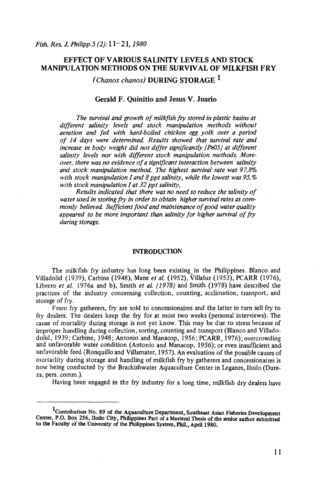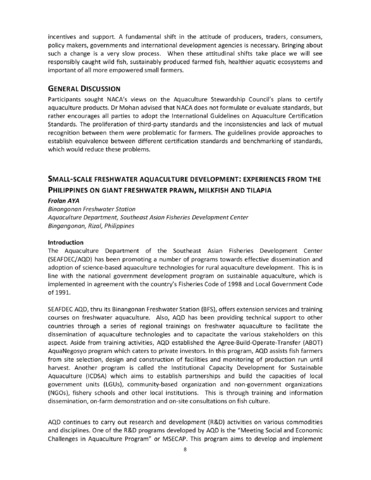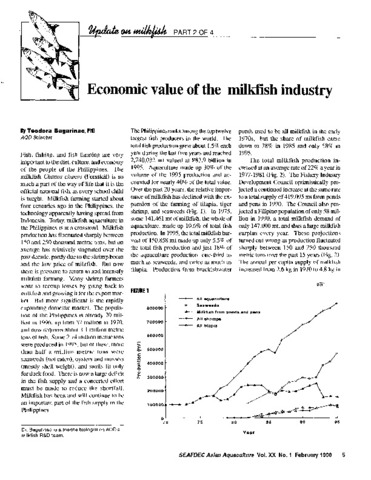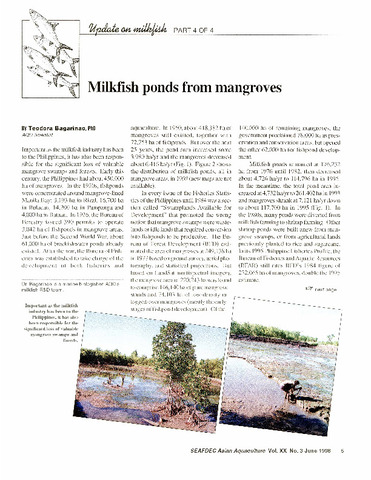Effect of various salinity levels and stock manipulation methods on the survival of milkfish fry (Chanos chanos) during storage.
Share
Abstract
The survival and growth of milkfish (Chanos chanos ) fry stored in plastic basins at different salinity levels and stock manipulation methods without aeration and fed with hard-boiled chicken egg yolk over a period of 14 days were determined. Results showed that survival rate and increase in body weight did not differ significantly (P > .05) at different salinity levels nor with different stock manipulation methods. Moreover, there was no evidence of a significant interaction between salinity and stock manipulation method. The highest survival rate was 97.8% with stock manipulation 1 and 8 ppt salinity, while the lowest was 95.% with stock manipulation 1 at 32 ppt salinity.
Results indicated that there was no need to reduce the salintiy of water used in storing fry in order to obtain higher survival rates as commonly believed. Sufficient food and maintenance of good water quality appeared to be more important than salinity for higher survival of fry during storage.
Description
Contribution No. 89 of the Aquaculture Department, SEAFDEC.
Suggested Citation
Quinitio, G. F., & Juario, J. V. (1980). Effect of various salinity levels and stock manipulation methods on the survival of milkfish fry (Chanos chanos) during storage. Fisheries Research Journal of the Philippines , 5(2), 11-21. http://hdl.handle.net/10862/1096
Subject
Taxonomic term
Collections
- AQD Journal Articles [1248]
Related items
Showing items related by title, author, creator and subject.
-
Small-scale freshwater aquaculture development: Experiences from the Philippines on giant freshwater prawn, milkfish and tilapia
Aya, Frolan (Japan International Cooperation Agency, 2013-12)The Aquaculture Department of the Southeast Asian Fisheries Development Center (SEAFDEC/AQD) has been promoting a number of programs towards effective dissemination and adoption of science-based aquaculture technologies ... -
Economic value of the milkfish industry
Bagarinao, Teodora (Aquaculture Department, Southeast Asian Fisheries Development Center, 1998)A brief description is given of the milkfish (Chanos chanos) farming industry in the Philippines. Over the past 20 years, the relative importance of milkfish has declined with the expansion of tilapia, tiger shrimp and ... -
Milkfish ponds from mangroves
Bagarinao, Teodora (Aquaculture Department, Southeast Asian Fisheries Development Center, 1998)




